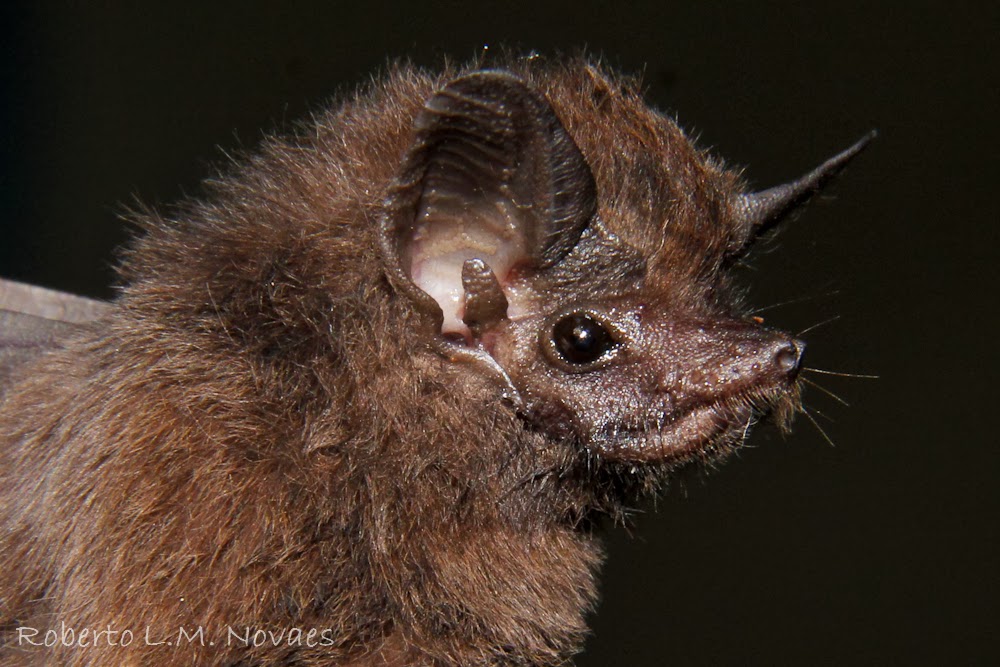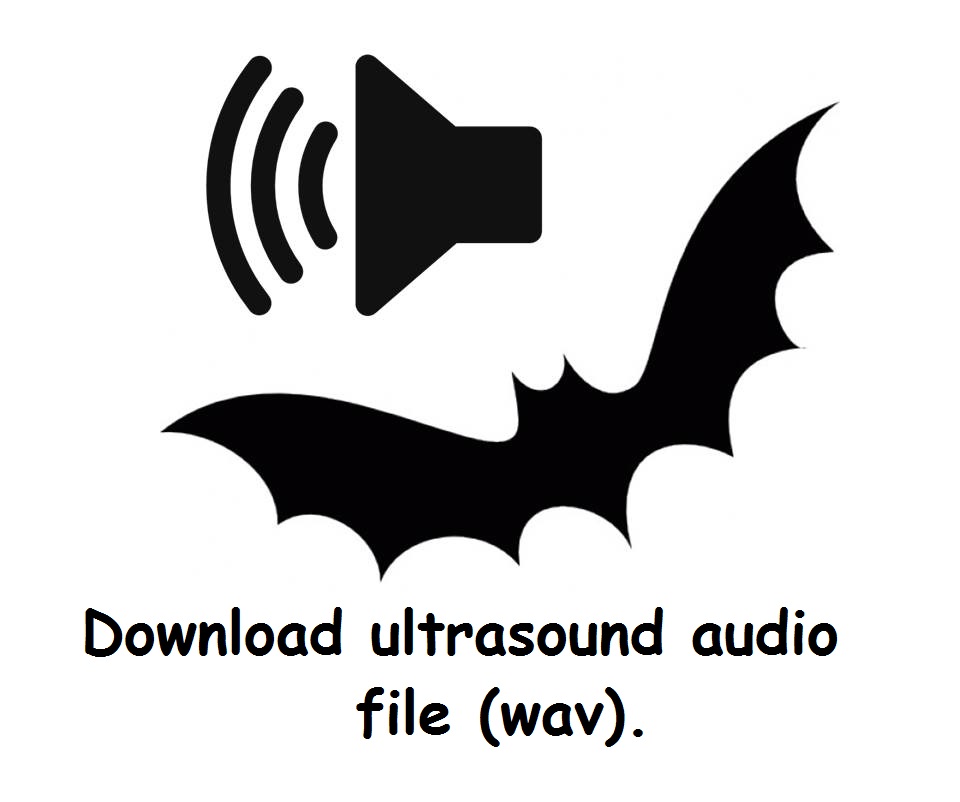Languages
Peropteryx trinitatis
Peropteryx trinitatis
Head body is 45-46 mm and the weight can be 3 to 8 g. Peropteryx trinitatis is sexually dimorphic in body size and cranial measurements, with females slightly largen than males. Dorsal fur is uniformly dark brown to reddish brown, ventes is lighter with red tones.
They live in tropical and subtropical forests, savannas, xeric shrublands, pasture, gardens, swamps and deserts. They roost in hollow trees, hollow rotten logs, cave entrances, and houses and under rockas and overhanging banks.
Their echolocation calls have only one pulse with quasi constant frequency (QCF) with convex format to down and with two modulated frequency (FM). The frequency maximum of energy (FME) is about 42-44 kHz.
They are distributed in parts of Venezuela, Guyana, the north and center of Brazil, and also in the Caribbean (Aruba, Margarita, Trinidad and Tobago).
Figure 1. Peropteryx trinitatis echolocation. A) Oscillogram of the acoustic pulses; B) Spectogram of an echoloction call; C) Force spectogram.





